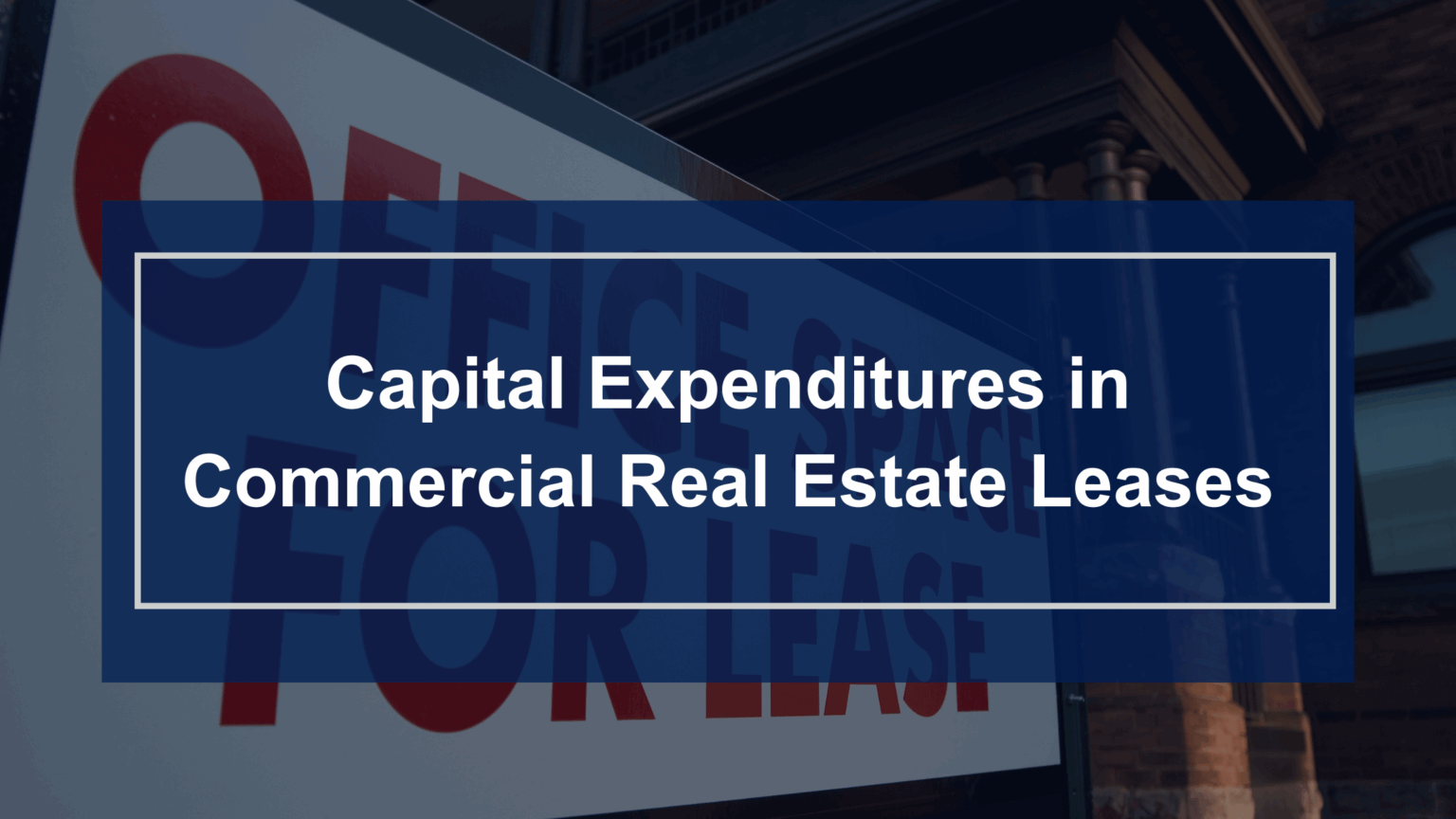In commercial real estate leases, capital expenditures (CapEx) often become a hidden source of major costs and confusion. These are not your routine repairs—they’re large-scale investments like replacing an HVAC system, upgrading elevators, or resurfacing parking lots. Whether you’re a tenant or a landlord, it’s critical to understand how these expenses are treated in your lease.
What Are Capital Expenditures in Commercial Real Estate Leases?
Capital expenditures are improvements that extend a building’s lifespan or increase its value. In the context of commercial real estate leases, these might include:
- Roof replacements
- HVAC upgrades
- Parking lot resurfacing
- Elevator modernizations
These costs can significantly affect how a lease is priced and what each party is responsible for over time.
Types of Commercial Real Estate Leases and CapEx Obligations
How CapEx is handled often depends on the type of lease:
- Gross Lease – The landlord pays for most expenses, including CapEx, although rent may be adjusted to account for these costs.
- Modified Gross Lease – A blend of gross and net, where tenants may be partially responsible for CapEx depending on the terms.
- Triple Net Lease (NNN) – Tenants typically pay a pro rata share of all building expenses, including capital improvements, if outlined in the lease.
Knowing which lease structure you have is essential for forecasting your financial obligations accurately.
Key Clauses to Review in Commercial Real Estate Leases
1. Operating Expenses Definition
Some commercial real estate leases include CapEx under operating expenses. Tenants should review this clause carefully to avoid unexpected charges.
2. Amortization Terms
Instead of paying for a $100,000 HVAC system upfront, the lease might spread it out over 10 years. This clause protects tenants from financial shock, but it must be negotiated clearly.
3. Exclusions and Caps
Savvy tenants often negotiate to exclude structural repairs or set caps on annual pass-through increases related to CapEx.
Tips for Tenants
- Conduct Property Due Diligence: Learn the condition of HVAC, roofing, and other major systems before signing the lease.
- Negotiate Smart Terms: Always negotiate how CapEx is handled and request amortization of big expenses.
- Request Expense History: Ask for prior years’ CapEx charges and upcoming planned projects.
- Get Legal Help: Lease language can be complex—have your attorney review all CapEx clauses.
Landlord Strategies for Managing CapEx
1. Use Precise Language
Make sure commercial real estate leases clearly distinguish between operating expenses and capital expenditures.
2. Amortize Major Costs
Spreading expenses across multiple years helps recover costs without scaring tenants away.
3. Communicate Early and Often
Let tenants know about upcoming projects and justify costs with quotes or invoices.
4. Align Upgrades With Lease Timing
Plan major improvements around lease renewals or move-outs to reduce disruption.
5. Stay Competitive
Your lease must be competitive with others in your market. Be flexible when working with long-term or anchor tenants.
The Role of a CRE Broker
Navigating commercial real estate leases, especially those involving CapEx, can be tricky. This is where an experienced CRE broker like Larry Emmons adds real value. He helps clients:
- Understand complicated lease terms
- Negotiate fair and protective CapEx clauses
- Identify lease structures that align with business goals
- Review expense history and evaluate risk
Larry’s local market knowledge and lease expertise give you an edge—whether you’re leasing a small office or managing a multi-tenant building.
Conclusion
Capital expenditures can drastically impact your costs and investment returns. That’s why a clear understanding of how CapEx is handled in commercial real estate leases is crucial. Whether you’re a tenant or a landlord, negotiating the right lease terms and working with a trusted advisor like Larry Emmons can make all the difference.
